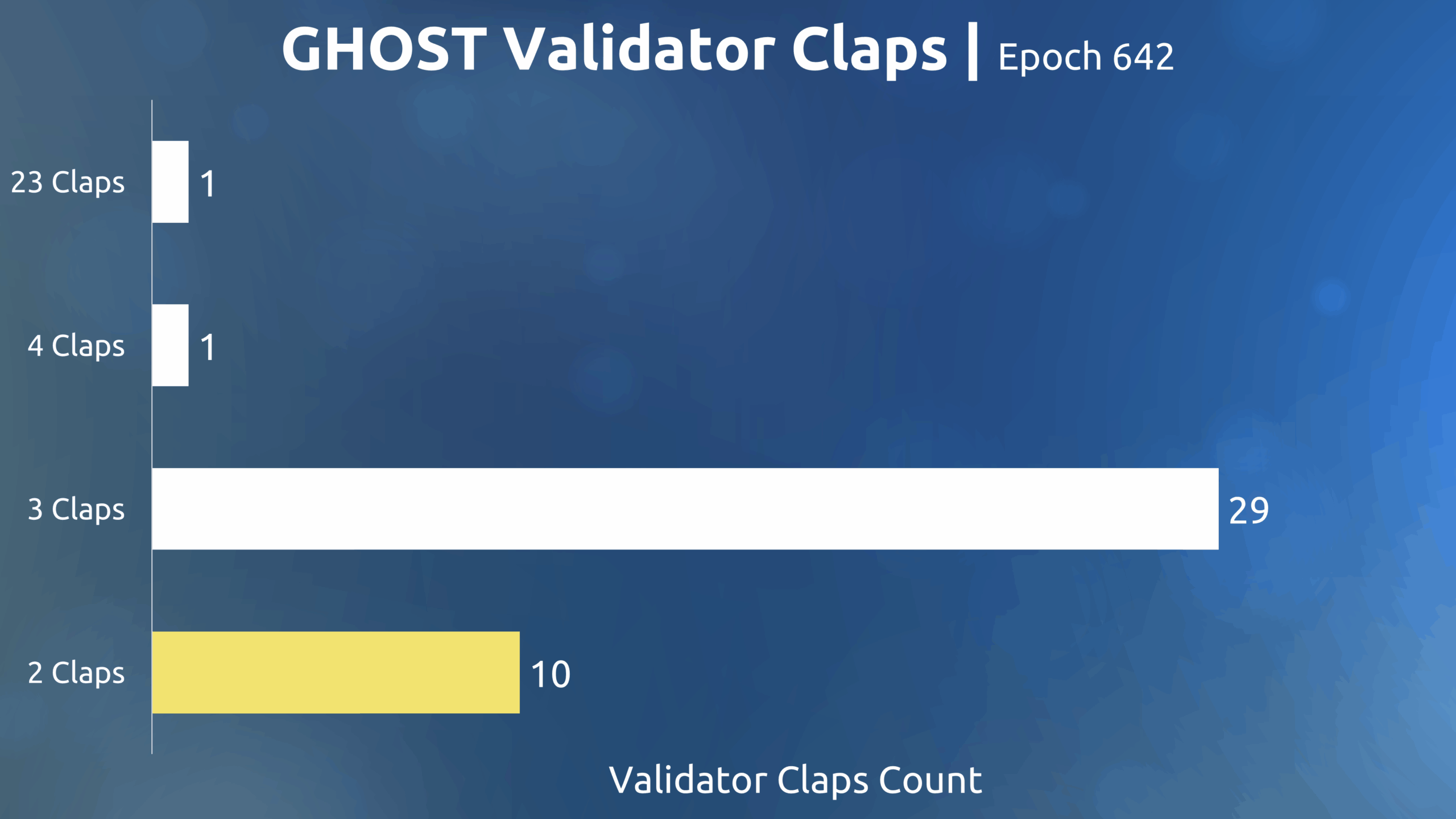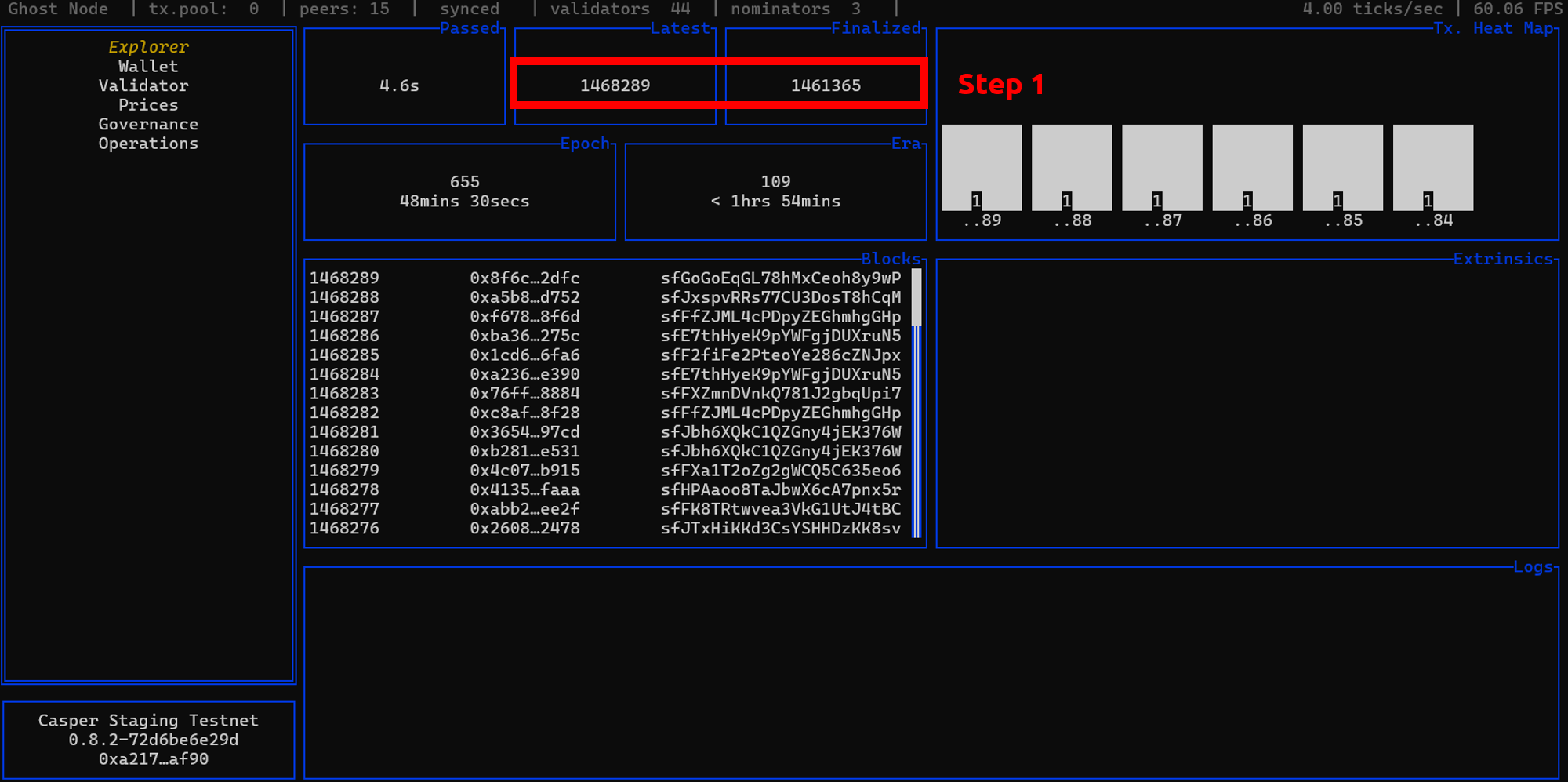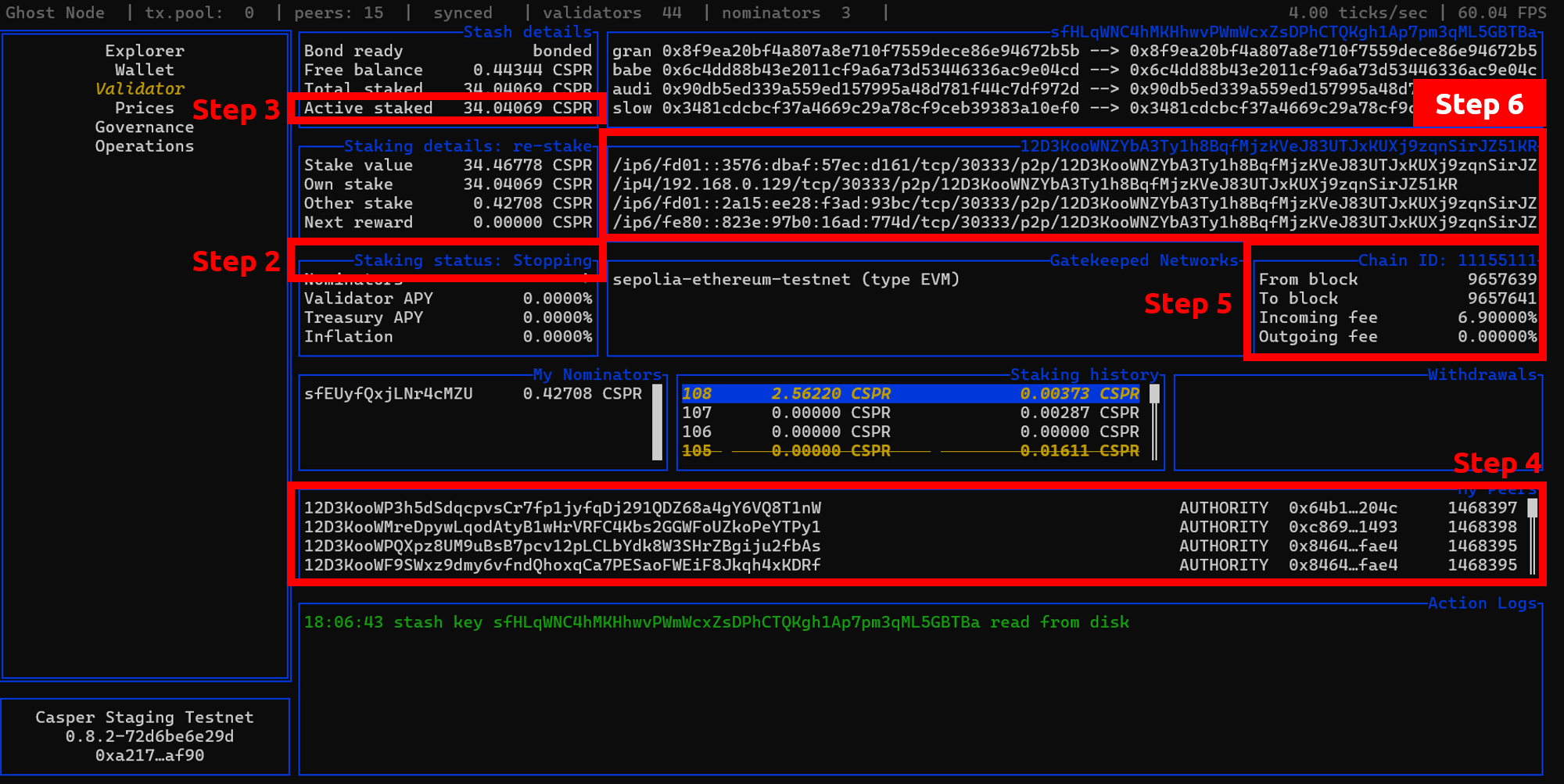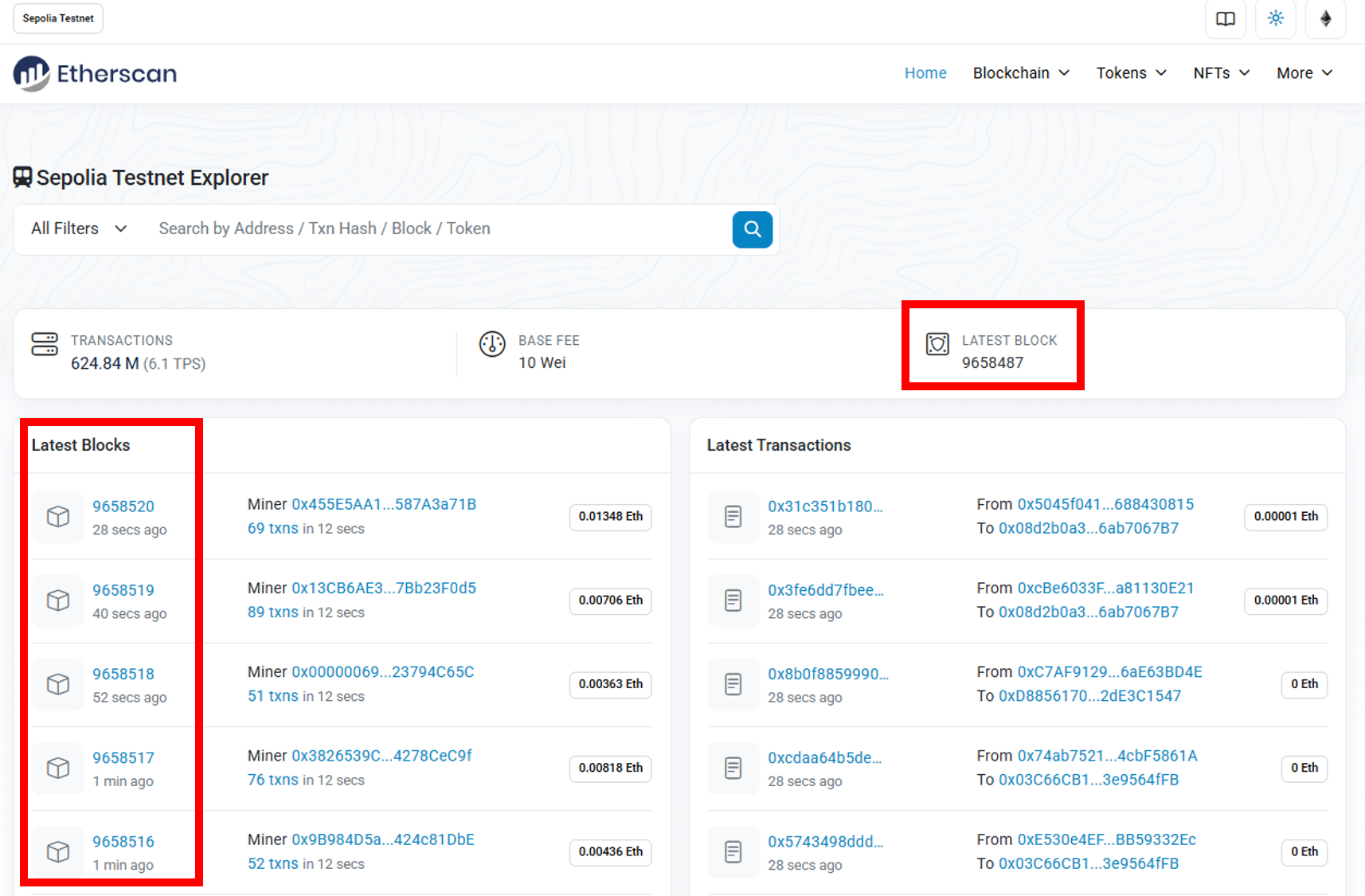An honest GHOST validator is defined not by intent, but by the correct and reliable actions of its node.
To maintain good standing, a validator must accurately process both GHOST-specific transactions and bridge-specific transactions. While GHOST-native transactions are relatively straightforward and similar to those on other blockchains, the bridge functionality introduces relative complexity.
Such complexity arises because a validator’s operational overhead increases linearly with each new chain added to the bridge. A primary point of failure is the reliance on RPC endpoints for these bridged chains, which can be subject to rate limiting and instability.
A special example of these challenges occurred in Epoch 642 (on November 17, 2025).

The true number of bridging transactions in this Epoch was 2. However, the 10 validators who reported the correct count of Claps (i.e. bridging transactions) were slashed. This occurred due to the slashing conditions for bridge transactions, which penalize validators whose reported Clap count deviates significantly from the network median.
GHOST Validatori is slashed if:
The median Clap count reported by the majority of validators was so inaccurate that it overpowered the truthful minority. The honest validators were penalized, and the network’s consensus was compromised by validators who failed to report accurate bridge data.
How can validators prevent such network failures in the future?
GHOST-Eye Honest Validator Checklist
To safeguard against slashing events and ensure network health, validators should routinely perform the following checks using the GHOST-Eye monitoring tool. This checklist provides a systematic approach to verifying node integrity.
Explorer Tab

A healthy node remains closely synchronized with the chain’s block height.
Step 1. Block Finality
In the Explorer Tab, confirm that the Latest Block and Finalized Block heights are within a narrow range. A properly functioning node should typically show the Latest Block trailing the Finalized Block by no more than 2 to 10 blocks.
Validator Tab
Proceed to the Validator Tab to perform these critical, node-specific checks.

Step 2. Staking Status
Confirm your validator’s staking status is displayed as Active.
Step 3. Minimum Stake
Ensure your Active staked amount of CSPR meets or exceeds the minimum required for validators (e.g., 6.9 CSPR).
Step 4. Peer Synchronization
Review the block heights of your node’s peers. They should be closely aligned with the GHOST block heights of your node.
Step 5. Chain Data
Ensure the From Block and To Block range is comparable to the actual block heights on the bridged chain (e.g., Sepolia). A discrepancy here is a primary cause of incorrect Clap reporting.

Step 6. Node Config
For advanced users, periodically review validator-specific settings such as port numbers and IP addresses to ensure they are correctly configured and accessible.
Conclusion and Action Plan
If all the above checks pass, your node is in good standing, and you may proceed confidently.
However, if any of these checks fail, it is highly advisable to chill your node immediately. Address and resolve any identified issues before re-activating your validator to avoid slashing and to help maintain the stability of the GHOST network.


![Read more about the article GHOST Chain Testing Connectivity [~1 HR]](https://blog.ghostchain.io/wp-content/uploads/2024/09/GHOST-Chain-Testing-Connectivity-300x157.png)
![Read more about the article Launching GHOST TestNet 3.1 [~1 HR]](https://blog.ghostchain.io/wp-content/uploads/2025/02/Launching-GHOST-TestNet-3.1-Featured-Image-300x157.png)